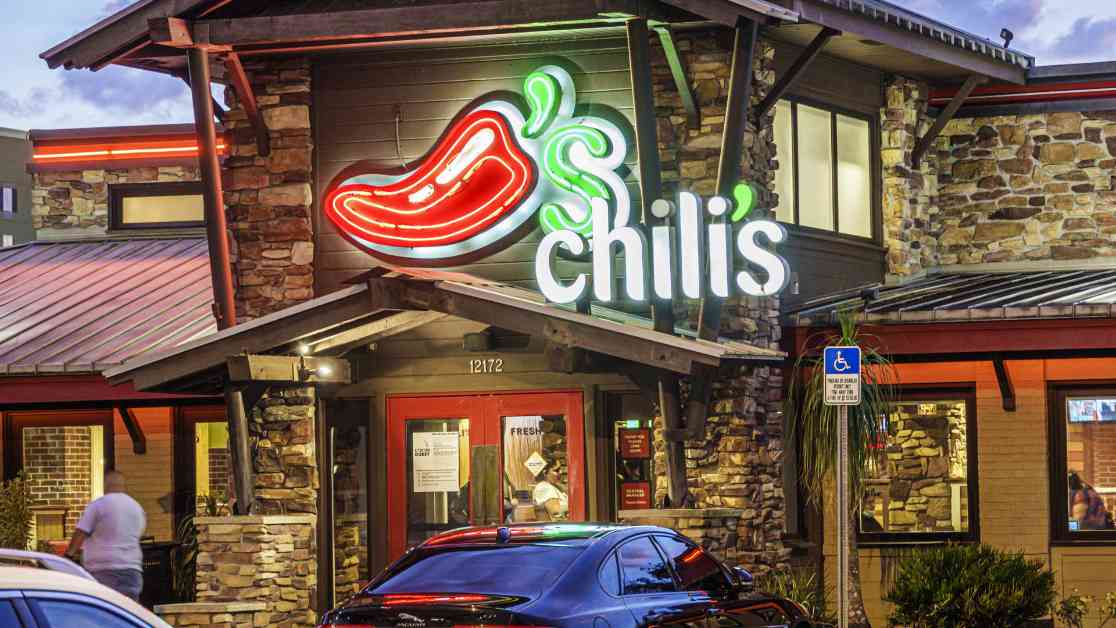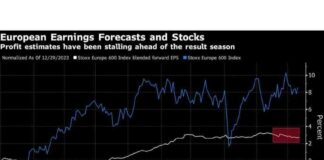Chili’s Grill & Bar has experienced a significant surge in sales thanks to a combination of factors, including a successful ad campaign targeting fast-food chains and the viral popularity of one of its appetizers on TikTok. The chain’s same-store sales climbed nearly 15% in its latest quarter, showcasing a strong performance that CEO Kevin Hochman attributes to customers finally recognizing the brand’s two-year turnaround efforts.
Brinker International, the parent company of Chili’s, has seen its shares rise by 53% this year, bringing its market value to $2.99 billion. However, the stock closed 10.7% lower on Wednesday after the company fell short of analysts’ expectations in terms of earnings and offered a conservative outlook for its fiscal 2025. Despite this setback, shares rebounded by 7% in afternoon trading on Thursday, with KeyBanc Capital Markets upgrading the stock and attributing the previous day’s decline to an “overreaction” from investors.
Chili’s impressive same-store sales growth of 14.8% has surpassed even the estimates of industry analysts, positioning the chain alongside the likes of Chipotle and Wingstop as one of the few public restaurants reporting strong traffic and sales growth during a period of economic uncertainty. In contrast, casual-dining rivals such as Applebee’s and Outback Steakhouse have reported declines in same-store sales for their latest quarters, highlighting Chili’s exceptional performance in a challenging market.
A significant driver of Chili’s growth in the latest quarter was its $10.99 Big Smasher meal, which accounted for about 60% of the chain’s sales increase. By targeting fast-food competitors in television ads and tapping into consumer dissatisfaction with rising prices in the fast-food industry, Chili’s effectively promoted the value proposition of its offerings and attracted new customers to its restaurants. Another successful menu item for Chili’s was the Triple Dipper, which gained viral popularity on TikTok in May and contributed to approximately 40% of the chain’s sales growth.
Despite the success of these promotional efforts, the increased demand for the Big Smasher and Triple Dipper presented operational challenges for Chili’s. The chain had to ensure that its restaurants were equipped to handle the influx of customers, many of whom were trying Chili’s for the first time or returning after an extended period. Hochman noted that Chili’s had been investing in its workforce over the past two years by hiring additional staff, such as bussers and cooks, to meet the growing demand. While these investments impacted the company’s bottom line in the short term, they were essential for sustaining its growth trajectory.
Beyond operational improvements, Chili’s turnaround under Hochman’s leadership has involved strategic changes to enhance profitability. The chain has streamlined its menu by eliminating approximately 22% of items, focusing on core offerings that resonate with customers. Brinker has also discontinued less profitable initiatives, such as the Maggiano’s Italian Classics virtual brand, to prioritize resources and drive sustainable growth. By aligning its value proposition with consumer preferences and market trends, Chili’s has positioned itself as a leader in the casual dining segment.
Looking ahead, Chili’s faces increasing competition in the restaurant industry as rivals introduce their own value meal promotions to attract cost-conscious diners. Despite this competitive landscape, Hochman remains confident in Chili’s ability to retain its new customers and sustain its growth momentum. The chain has been emphasizing its value proposition for nearly 18 months, building awareness and loyalty among consumers who are seeking affordable dining options. While other players in the market may offer aggressive discounts, Chili’s believes that its longstanding commitment to value will differentiate it from competitors.
As Brinker enters its fiscal year 2025, the company is projecting earnings per share of $4.35 to $4.75 and revenue growth of 3% to 4.6%. While investors had hoped for a more optimistic outlook given Chili’s recent success, the company is taking a cautious approach due to economic uncertainties. Hochman acknowledged the challenges posed by a changing economic landscape and emphasized the importance of setting achievable goals to navigate potential headwinds. Despite recent shifts in consumer behavior and pricing trends, Chili’s remains focused on delivering value to its customers and adapting to evolving market dynamics.
In conclusion, Chili’s impressive sales surge can be attributed to a combination of factors, including targeted advertising campaigns, viral menu items, and operational enhancements. By capitalizing on consumer preferences for value and quality, the chain has differentiated itself in a competitive market and positioned itself for sustained growth. As Brinker navigates the challenges of a shifting economic environment, Chili’s commitment to innovation and customer satisfaction will be essential for maintaining its momentum and driving future success in the restaurant industry.






















